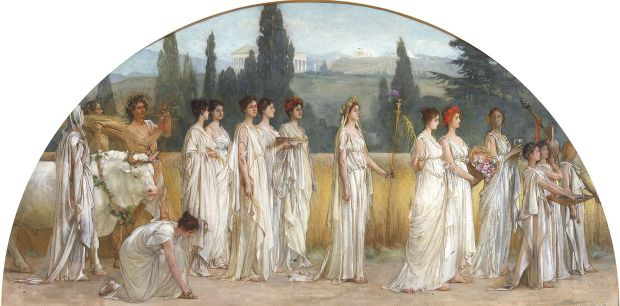It’s no great secret that medieval literature is my favorite period of literature. I read monastic authors…for fun. I get that’s weird to most people, but the older I get, the more I realize everyone has their “weird thing.” It’s what makes people fun. And when K.P. requested that this month’s theme be about romance, my mind went instantly to one of my favorite (and weird) romance stories of the middle ages.
Well, really, it’s my favorite because it’s weird.
But also, because it isn’t just a romantic match ignited by physical passion; rather, the passion was ignited by intellectual equality. I’ve always joked I’ll find my perfect match when our hands touch reaching for the same book at Barnes & Noble…I imagine that’s what the “meet cute” was like for Abelard and Heloise.

Heloise’s uncle wanted only the best education for his niece. Contrary to many misconceptions, women could receive an education in the middle ages…provided they could pay for it. And Heloise’s uncle could. Heloise’s reputation as an intellectual–and a beauty–attracted Peter Abelard, who offered his tutoring services. The two began a passionate love affair that ended in Heloise’s pregnancy, forcing them to marry in secret–which she, knowing it would be the end to both their intellectual pathways, opposed.
Heloise’s uncle and other family members, however, believing that Abelard had ruined their kinswoman, sent a group to Abelard at an inn to attack him and have him castrated–a harsh, but poetic, punishment.
After this, Abelard and Heloise agreed to surrender to a monastic life. Yet, it is this life that leads them to engage in a series of letters which demonstrate their intellectual brilliance. They can no longer be physical lovers, but they can still love what fiercely attracted them to one another in the first place–the other’s mind. Though the letters, Problemata, and the relationship, are products of their time, and must be viewed thus, there is a very present equality in this relationship that seems almost ahead of its time.
For two people as passionate as Abelard and Heloise, one can only imagine how difficult their forced separation was. Yet it is evident from their correspondence that this separation split them in body only, not in heart, mind, or soul. Still, the pain of the physical separation is decidedly present in these letters, especially because, though they might see one another again, they would never be able to communicate on the same level they once had. They must find a new way to relay their passions for one another. In her letters to Abelard and in Problemata, Heloise seems to find a new way to reassess the relationship by attempting to adjust to her new life, going back to their beginnings, and manipulating the subject matter.
In her letters to Abelard, Heloise makes it clear that though she lives a monastic life, she does not feel it as she ought; rather, she does it for his sake (69). Still despite her claim that she is “sighing” over her lost love, and not her sins (68), she does make an astounding effort in her new life by engaging Abelard in various theological matters, as she does in Problemata. After Heloise’s letter to Abelard claiming her distress at their situation, Abelard replies by telling her the reasons they must endure this trial and asking that she speak no more of it. In her reply, Heloise consents to not mention it, and immediately turns to other subjects. But before doing so, she notes that Abelard “has it in [his] power to remedy my grief, even if [he] cannot entirely remove it” (93). She agrees to make the attempt for his sake, but by ending the subject thus, she not only gives herself the final word, but also lets him know her feelings toward his request without seeming ungrateful. It is, in a sense, a very diplomatic way of ending a conversation that respects Abelard without debasing herself. She holds him as equal, and expects the same in return.
Another way that Abelard and Heloise seem to renegotiate their relationship is by

returning to the origin of the relationship itself. They met over books, and Abelard notes that what drew him to her was her “gift for letters” (10). Once they begin their renegotiation, they return to that intellectual conversation. Problemata is an intellectual text in itself, in that Heloise poses theological questions and inconsistencies, and Abelard replies with his thoughts. Similarly, in their letters, after Heloise agrees not to mention her pain, she turns to Abelard and asks again for his tutelage. She wants him to come and teach her and the other nuns about the history of their order and to help her create a Rule by which they should live (94). This is a renegotiation in that in their original relationship, while Abelard was her tutor, they did much more than study. Now, it seems, he can teach her all he knows, and they can each focus on each other’s intellect, since the major physical aspect of their relationship is off limits.
A third way they reassess their relationship is through their “question and answer sessions.” In Problemata, Heloise is asking all the questions, but these questions, though not theologically simple, do not paint Heloise to be at all ignorant of their answers. A lawyer’s mantra is “Never ask a question to which you do not already have the answer.” This seems to be Heloise’s thoughts in Problemata, as well. She asks questions and sets up Abelard’s brilliant answer, so that she has created a dialogue piece that works kind of like a jigsaw puzzle: each piece fits together perfectly. She uses similar tactics in her letters to Abelard, posing questions to him which she—regarded as intelligent in her own right—could answer, but it seems her point is to distract herself and Abelard from their pain and turn to “more important” subjects (93). One such example in her letters that is vaguely reminiscent of Problemata is when she asks Abelard about idleness: “But was not Mary sitting idle in order to listen to the words of Christ, while Martha was working for her as much as for the Lord?…(110). This question sounds like her questions in Problemata, but in this instance, she goes on to answer it herself and even compare it to those in monastic life who chant and read God’s word, but never meditate on it (110). In this way, she manipulates the subject matter of their correspondence to distract from their physical separation and re-focus their energy on more intellectual (and, for the time period, read “higher”) matters.
Their first few letters definitely portray the pain Abelard and Heloise felt at their forced separation, but this does not mar their overall relationship. As Heloise shows Abelard she is adjusting to her life in the convent (whether or not she actually is), their relationship continues and evolves, showing not only each person’s intellectual prowess, but that each of their individual minds is strengthened when they are united as one.
Two heads really are better…especially when they respect the other’s intellectual capacity.
Works Cited
Abelard, Peter. The Letters of Abelard and Heloise. Betty Radice, trans. Penguin Books, 1974.
Featured Image
Fortescue-Brickdale, Eleanor. “Abelard and Eloise.” Golden Book of Famous Women, Hodder and Staughton, 1919.


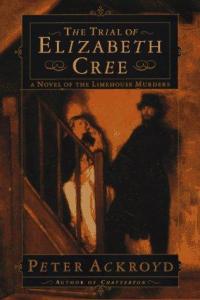 The story opens with Elizabeth Cree (portrayed by Olivia Cooke in the movie), “Little Lizzie” as she’s known in the stage circles, being accused of poisoning her husband, John, a reporter and playwright, based on the evidence that she prepared his nightly draught, which was laced with poison.
The story opens with Elizabeth Cree (portrayed by Olivia Cooke in the movie), “Little Lizzie” as she’s known in the stage circles, being accused of poisoning her husband, John, a reporter and playwright, based on the evidence that she prepared his nightly draught, which was laced with poison.

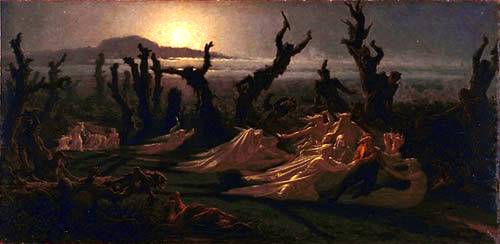



 To break down the old Norse Valkyrjur, Valr referred to the slain of the battlefield and kjósa, meant ‘to choose.’ Valkyrie translated to ‘Choosers of the Slain,’ a title that not only encompassed their choice of which warriors were granted Valhalla status, but who would die in battle. Valkyries didn’t shy away from invoking some heavy-duty black magics to ensure their choices came to fruition. In Njal’s Saga, there is an instance of twelve Valkyrie gathered around a loom, weaving fate like the Norns, though their materials are far grimmer. Here, the Valkyrie use intestines for thread, severed heads for weights, and swords and arrows for beaters, while they gleefully chant their hit list. The Saga of the Volsungs compares the sight of a Valkyrie to ‘staring into an open flame.’ To the Anglo-Saxons, they were spirits of carnage.
To break down the old Norse Valkyrjur, Valr referred to the slain of the battlefield and kjósa, meant ‘to choose.’ Valkyrie translated to ‘Choosers of the Slain,’ a title that not only encompassed their choice of which warriors were granted Valhalla status, but who would die in battle. Valkyries didn’t shy away from invoking some heavy-duty black magics to ensure their choices came to fruition. In Njal’s Saga, there is an instance of twelve Valkyrie gathered around a loom, weaving fate like the Norns, though their materials are far grimmer. Here, the Valkyrie use intestines for thread, severed heads for weights, and swords and arrows for beaters, while they gleefully chant their hit list. The Saga of the Volsungs compares the sight of a Valkyrie to ‘staring into an open flame.’ To the Anglo-Saxons, they were spirits of carnage.


 That’s one of the reasons I was attracted to Ragnarök Unwound, written by Kristin Jacques, author of Zombies Vs. Aliens and the upcoming Marrow Charm from Parliament House Press. Ragnarök Unwound is the story of Ikepela Ives, who is known as the Fate Cipher. The Fate Cipher’s job is to untangle the threads of fate. The only problem is Ives is the first part-mortal Cipher, and no one ever taught her how to use her powers. She runs away from her duty until one day, she can’t anymore. A Valkyrie locates her in a bar and pleads for her help in stopping Ragnarök, which has been set in motion. Jacques blends Norse and Hawaiian mythology for a truly unique tale filled with a unique ensemble cast.
That’s one of the reasons I was attracted to Ragnarök Unwound, written by Kristin Jacques, author of Zombies Vs. Aliens and the upcoming Marrow Charm from Parliament House Press. Ragnarök Unwound is the story of Ikepela Ives, who is known as the Fate Cipher. The Fate Cipher’s job is to untangle the threads of fate. The only problem is Ives is the first part-mortal Cipher, and no one ever taught her how to use her powers. She runs away from her duty until one day, she can’t anymore. A Valkyrie locates her in a bar and pleads for her help in stopping Ragnarök, which has been set in motion. Jacques blends Norse and Hawaiian mythology for a truly unique tale filled with a unique ensemble cast.

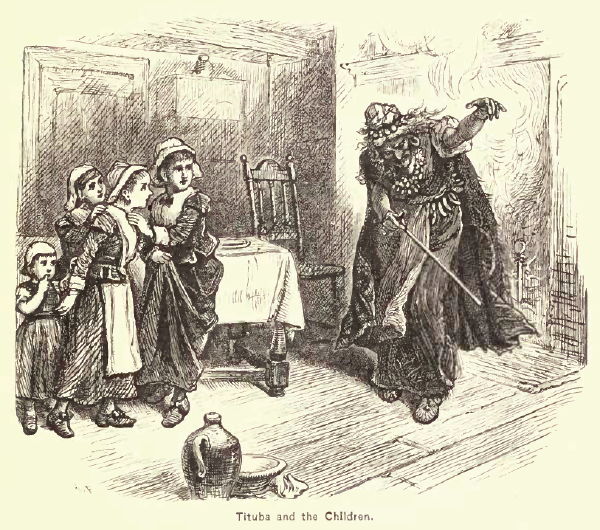

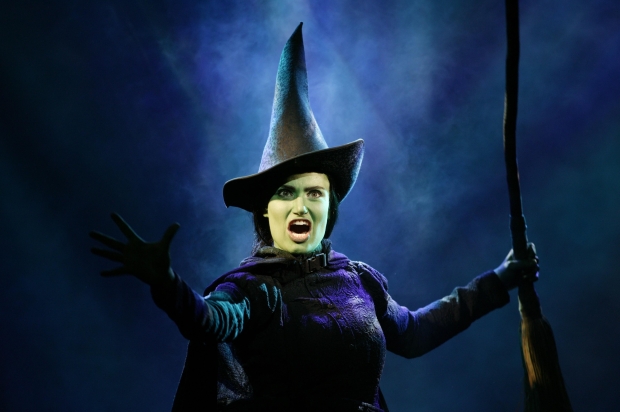





 All of that is to explain why this month, I had to get a little creative when it came to keeping with the theme. I’m going to look at Soul of the World, the first book in the Ascension Cycle, an epic fantasy series by David Mealing. The world is inspired by the European settlement of North America. On the coastline are the colonies of Sarresant, including the capital city of New Sarresant, whose culture is reminiscent of France. To the south are the colonies of Gand, reminiscent of England. To the west of the colonies is the Great Barrier, which separates them from tribes indigenous to the land, among them the Sinari, from which one of the protagonist hails.
All of that is to explain why this month, I had to get a little creative when it came to keeping with the theme. I’m going to look at Soul of the World, the first book in the Ascension Cycle, an epic fantasy series by David Mealing. The world is inspired by the European settlement of North America. On the coastline are the colonies of Sarresant, including the capital city of New Sarresant, whose culture is reminiscent of France. To the south are the colonies of Gand, reminiscent of England. To the west of the colonies is the Great Barrier, which separates them from tribes indigenous to the land, among them the Sinari, from which one of the protagonist hails.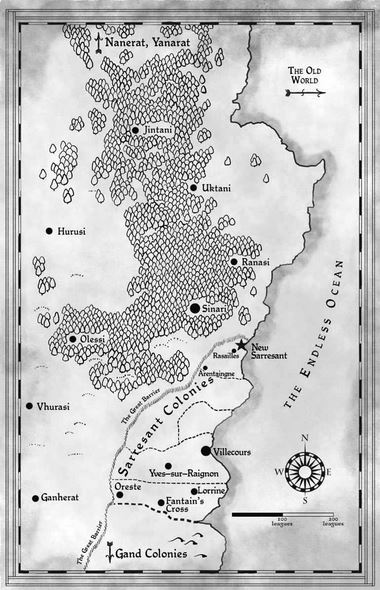

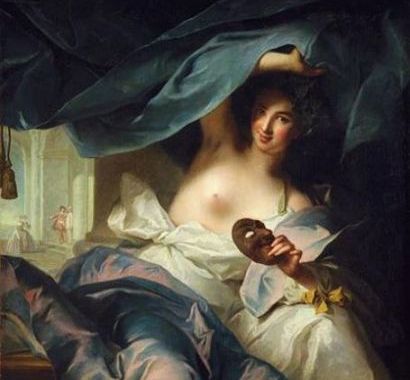

 important to the Eleusinian Mystery cult, the goddess was indeed desolate without her daughter. She was in great mourning when Hades stole away her daughter
important to the Eleusinian Mystery cult, the goddess was indeed desolate without her daughter. She was in great mourning when Hades stole away her daughter 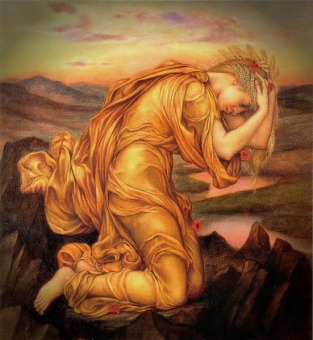 Seeing Demeter’s state, Iambê, true to her nature began to tease the mother goddess by telling jokes. Her use of humor brought a smile to Demeter, then eventually the mother goddess found herself laughing and enjoying herself. “Iambê, the one who knows what is dear and what is not, started making fun. Making many jokes, she turned the Holy Lady’s disposition in another direction, making her smile and laugh and have a merry thûmos.”
Seeing Demeter’s state, Iambê, true to her nature began to tease the mother goddess by telling jokes. Her use of humor brought a smile to Demeter, then eventually the mother goddess found herself laughing and enjoying herself. “Iambê, the one who knows what is dear and what is not, started making fun. Making many jokes, she turned the Holy Lady’s disposition in another direction, making her smile and laugh and have a merry thûmos.”